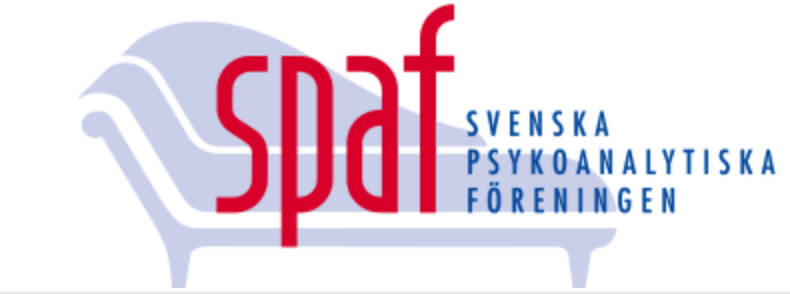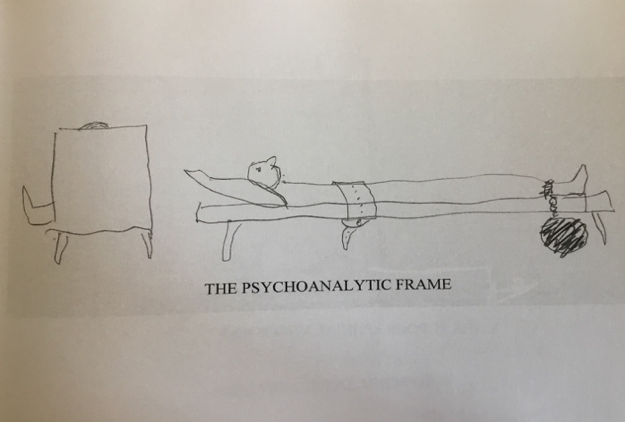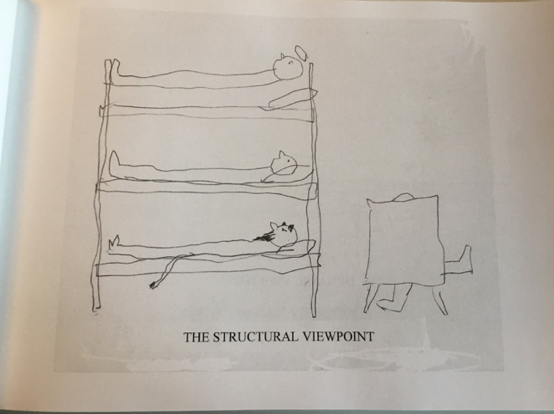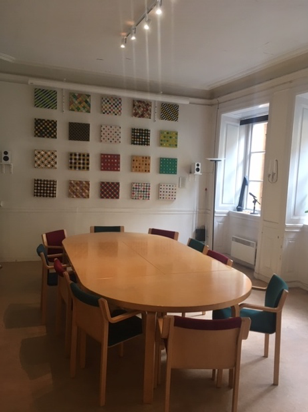Swedish Psychoanalytical Association

History and background
The Swedish Psychoanalytical Society (Spaf) was founded in 1943, preceded by the Finnish-Swedish Psychoanalytical Society, founded in 1934.
1968 there was a traumatic split of the Society. A training analyst left the Society on grounds of deep personal and theoretical conflicts, followed by a group of colleagues, founders of what later developed into the Swedish Psychoanalytical Association (Spas).
In the shared background of these two societies (now one) there is the influence during the 30´s by European analysts, working as training analysts and teachers to the first generation of Swedish psychoanalysts.
During the 40´s Sweden was spared the atrocities of the World War. The “old” Spaf kept up a classical Freudian profile, much influenced by important refugee analysts as Lajos Szekely, Stefi Pedersen and Katarina Vertes. During the 50’s we met a new generation of refugees – Andras Pöstenyi, Imre Szecsödy, Egon Fenyö – all contributing to the development of teaching and supervisory structures in the Institute. Later the situation in Latin America brought candidates from this part of the globe to both societies. The fact that Sweden has been a haven of peace for more than 200 years has in a probably underestimated way influenced, opened up and enriched the inner life of our society.
The “new” Spas was initially directed towards American interpersonal psychoanalysis but soon turned towards the British tradition and invited analysts especially from the Independent group. The Association as an independent Institute accordingly developed an ambitious training programme. Both societies prospered, both had good training programmes, with similar structures. During the decades to come, psychoanalysis was “en vogue”, and both institutes had many candidates. Coexistence was possible. Spaf developed interests in object relations and in Bion´s writings, much encouraged by the founding of a Child Analysis training. Spas rediscovered the necessity of having a basic and thorough knowledge in Freud together with their deep interest in early disturbances. Teachers were exchanged. Combined peer groups for supervision and discussion, based on personal likings, also happened. The Child Analysis training in Spaf accepted members and candidates from Spas.
During the 80’s, theoretical discussions in the scientific meetings were sometimes quite polarized in Spaf, often perceived by the younger generation as repressive. This has to a considerable extent changed into a climate of open discussions on theoretical matters and a positive tendency to an eclectic understanding and exchange of differences in the approach to clinical work. Many years of continuous supervision by Contemporary Freudians and Modern Kleinians, as well as the teaching of members with a deep interest in French analysis has contributed to this development.
In the early 90´s, 25 years after the “split”, discussion about a possible rapprochement came up. The Association went through the process of becoming IPA Study group, and 2005 was accepted as Component Society.
Many processes in the external world were of joint interest: The aging population of active analysts; a waning inflow of candidates and of analysands. Both societies put huge resources into very ambitious training institutes. In 2007 a “decision of intention” was taken by both Boards, implying that the societies jointly should investigate and analyse the preconditions for a fusion.
A Work Group was constituted – two senior analysts from each society - which started working September 2007, delivering its final report after 18 months, concluding in a strong recommendation to implement a merging of the societies. In March 2009 the proposal to fusion was presented to the membership. The Boards then initiated formal steps to be taken in both societies, up to the final fusion in May 2010.
Since then Swedish Psychoanalytical Association is the internationally acclaimed name of the IPA Component Society.
The membership is up to date 175 members and 29 candidates. The Association and Training Institute is located in Stockholm. Groups of members are living and working elsewhere in Sweden, in Gothenburg to the west, in Umeå in the north, and a large group in Skåne in the south. A number of psychoanalysts and candidates in Skåne are trained or in training in the Danish Psychoanalytical Society, a considerable number of which are double members in both societies.

About Training
The training in the Swedish Association follows the Eitingon model. Lately, three questions have affected our institute and our society - the TA function, frequency of sessions, and the number of training cases.
2015 a proposal was presented to abolish the TA function. This led to intense discussions, a few members even chose to leave the society. For the time being, a decision was taken not to change the TA function. In the wake of these controversies, we have an ongoing discussion about membership levels and assessment of competence concerning the TA function.
During 2016-17 the Institute discussed the issue of session frequency in training cases and personal analysis. The decision was to stay with 4-5 sessions a week. The IPA Board decision in July 2017 did not alter this position, which has recently been confirmed in discussions with members and candidates.
However, we are facing a decision about the number of training cases. Within IPA, only three institutes have 3 training cases (PEC Listserve 2018-19). Our requirements for supervised cases are 3 years for one case, 2 years and 1 year for two cases. This puts high demands on our candidates at a time when, like in most parts of the world, it is difficult to find appropriate training cases. It is hard to combine the training with employment and also financially straining as there are no insurances to facilitate treatment.
The Institute starts a new class every second year. The seminars take place weekly for 4 ½ years. Supervision on clinical cases are weekly during the first year - then, if evaluations so permit, every second week.
The personal analysis of the analyst-in-training (candidate) should be with a TA, preferably starting before the theoretical training and continuing through training, but not mandatory until the end of the training. The end of the personal analysis is to be decided by the analytic couple, completely separated from and independent of the training institute.
In the fall of 2019, we will review our organization, which is bipartite: Board of Society and Board of Institute. The Institute is organized in committees, responsible for admission, seminars, supervision, etc. The Director of Training and chairs of committees constitute the Board of Institute.

Two issues are worth mentioning as specific traits in our training:
In the annual evaluation of the candidate’s clinical work candidate and supervisor discuss the candidate’s work and the cooperation supervisor/ supervisee. Each of them sends separately a written evaluation report to the Supervisory Committee (SC). The candidate and the supervisor(s) together meet representatives of the SC in a mutual evaluation and discussion of the candidate’s development as analyst-in-training. The candidate’s presence is crucial, and focus is on his/her reflections on personal “analyst development” and on the clinical process.
Our training for supervisors, initiated 1987 by Imre Szecsödy, open to TA, has earned a lot of interest around the world but still is – as far as we know – the only training for supervisors within IPA.
For a TA to be “Training and supervising analyst” it is required to have 2 years supervised supervision of a candidate´s analytic work – in the beginning frequently, later every second week. We regard this experience as crucial for the development of competence to supervise - a competence which unites skill in following the developmental progress of the unique candidate with sensitivity for pedagogical aspects of teaching and learning.
The theoretical part includes seminars every second week. It is important for the trainee to be active in this section. Every participant is responsible for several seminars on concepts of importance for supervision and the supervisory processes.
After 30 years we can emphasize that supervisory competence requires something beyond prolonged experience of working as a psychoanalyst. A broadened attention - from analytic understanding of the analysand to the development of the supervisee - is necessary and not uncomplicated to achieve. Learning alliance is of course important. To this, we add important and indispensable dynamic parameters as the frame, equidistance, transference- countertransference implications and intersubjectivity.
We are more than willing to share our experience of supervision training with interested colleagues within IPA.

Current challenges
……are both internal and external in our society.
Internally there is a discussion about the efficiency of our organization, and how to downsize administrative functions and committees. As mentioned above, we have a discussion about the assessment of competence for “training analysis” of candidates, related to controversial aspects of TA function.
Externally the challenge is to make ourselves visible at universities and within psychiatry. The attitudes of the Swedish establishment, National Health and the academic world are often uninformed and even rather hostile. There are exceptions; in Gothenburg and Lund, there is creative collaboration between philosophers and psychologists interested in psychoanalysis. In Stockholm, we have since decades been successful in arranging very well attended public lectures on various psychoanalytic subjects – under the headline “With Psychoanalysis from the Cradle to the Grave”.
And finally – just this month we are launching what could be the precursor of a “clinic” – a consultation activity offering guidance about psychoanalysis, as well as “someone to talk to”.
Text: Franziska Ylander, Sören Broms, Arne Jemstedt, Björn Sahlberg
Illustrations: Rolf Sandell from Behind the Couch: “The Structural Viewpoint” and “The psychoanalytical frame”
Photo: From our office. Björn Sahlberg